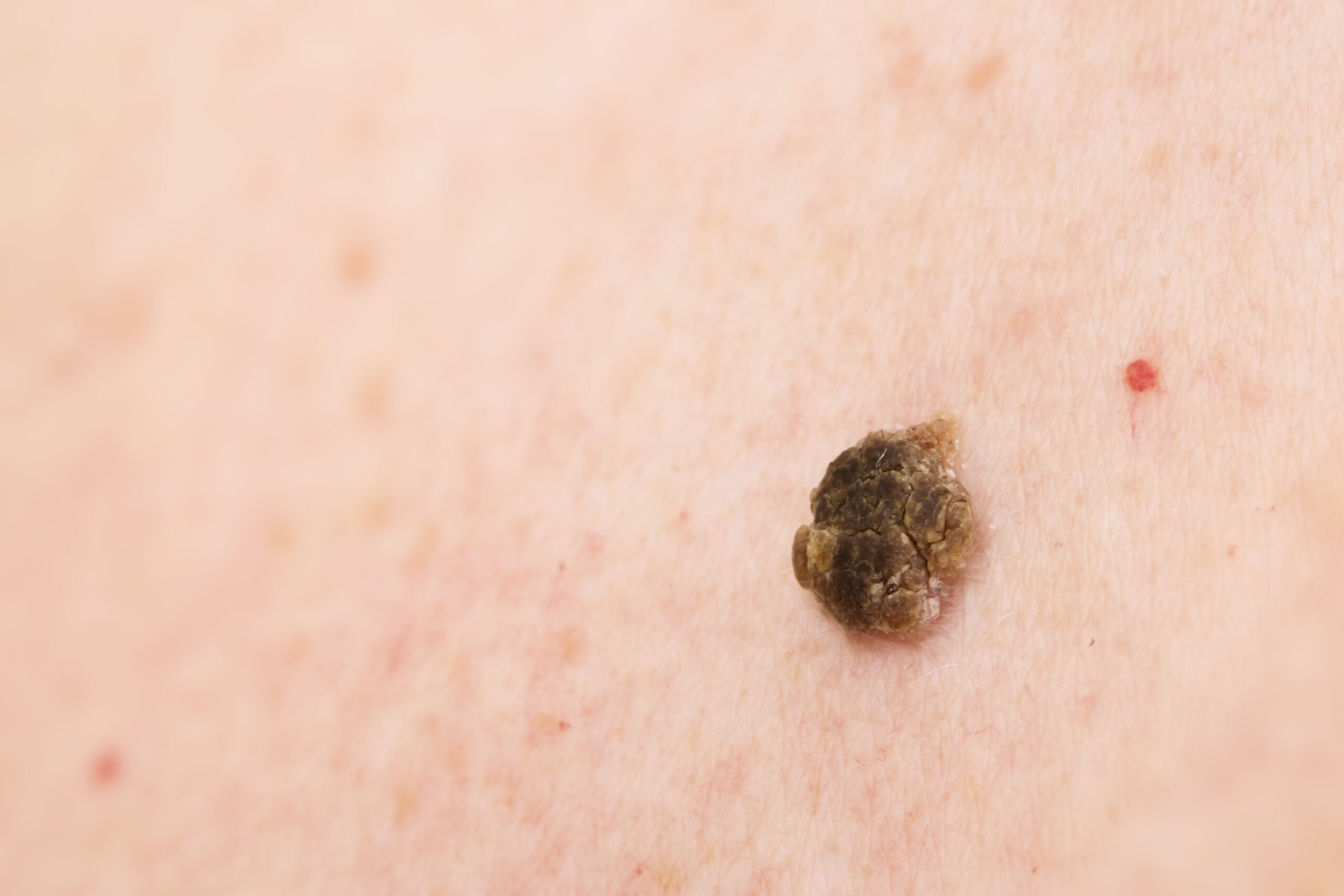Discovering a new skin growth can be unsettling, but a seborrheic keratosis is one of the benign skin growths. These common, non-cancerous spots can appear as you age, ranging from small, wart-like bumps to larger, dark patches. HMGS Dermatology is here to help you learn more about what these growths are, how to identify them, and your options for treatment.
What Is a Seborrheic Keratosis?
Seborrheic keratosis (SK) is a common, non-cancerous skin condition that many people experience as they age. These growths, sometimes referred to as “barnacles,” by HMGS Providers can appear anywhere on the body and vary in size and color. While generally harmless, they can cause cosmetic concerns, itching, bleeding and/or discomfort, leading individuals to seek treatment options to remove or reduce their appearance. SKs often increase in number over time and are often familial. 75% of patients over age 70 have SKs.
Are There Other Keratoses That Are Not Seborrheic?
There are many different kinds of keratoses that are not necessarily the same as seborrheic keratosis. For example, actinic keratoses are precancerous lesions and are not at all related to SKs. Keratosis pilaris is a follicular disorder often found on the arms and legs. There are also dozens of skin lesions that can mimic seborrheic keratosis, including warts, moles, squamous cell carcinoma, melanoma, actinic keratoses, and basal cell carcinoma.
Are Seborrheic Keratoses Skin Cancer?
Seborrheic keratoses are growths that are commonly mistaken for skin cancer but are benign in nature. However, it’s common for SKs to be mistaken for skin cancer by patients because of their new or unusual appearance. The best way to determine if your growth of concern is skin cancer or a benign growth is to seek medical advice. HMGS Dermatology providers will sometimes perform a skin biopsy on ambiguous lesions to help differentiate between benign and malignant growth. Our group also employs the use of a dermatoscope (think of a hand-held, special skin microscope) to identify telltale signs of a SK.
Do Seborrheic Keratoses Need to be Treated?
Most of the time, the answer is no. For some people, a seborrheic keratosis is not bothersome and rather viewed as a “sign of wisdom”, like gray hairs or wrinkles. Of course, if your SK is causing pain, itching, bleeding, or otherwise irritating your skin due to grooming, exercise, or wearing certain clothing, or jewelry you might seek to remove your SK. Other patients elect for the removal of their SK for cosmetic reasons.
How does HMGS Dermatology Treat SKs?
Our providers have many different ways to treat seborrheic keratoses. Treatment methods may include the use of liquid nitrogen to freeze off the lesion, curettage to gently shave off the lesion, or electrosurgery to allow the lesion to be gently scraped off. We also use the Gentlelase laser to remove SKs.
Schedule Your Skin Check Consultation
Skin growths of any kind can sometimes be difficult to diagnose. If you’re concerned about a skin growth, it’s always best to seek out guidance from an expert, such as those at HMGS Dermatology. To schedule a skin check and meet with our HMGS providers, book an appointment today or call us at 856-452-8586.
